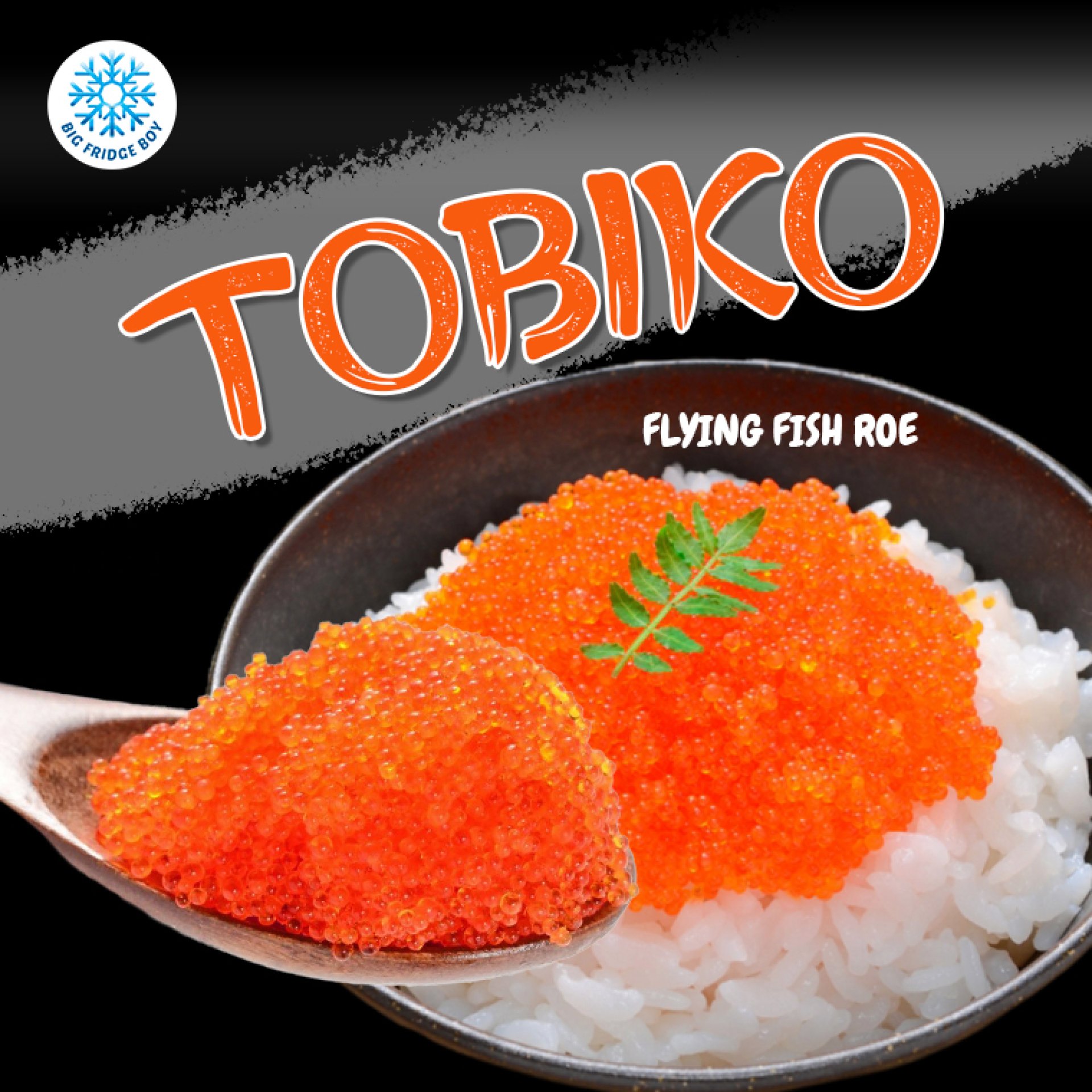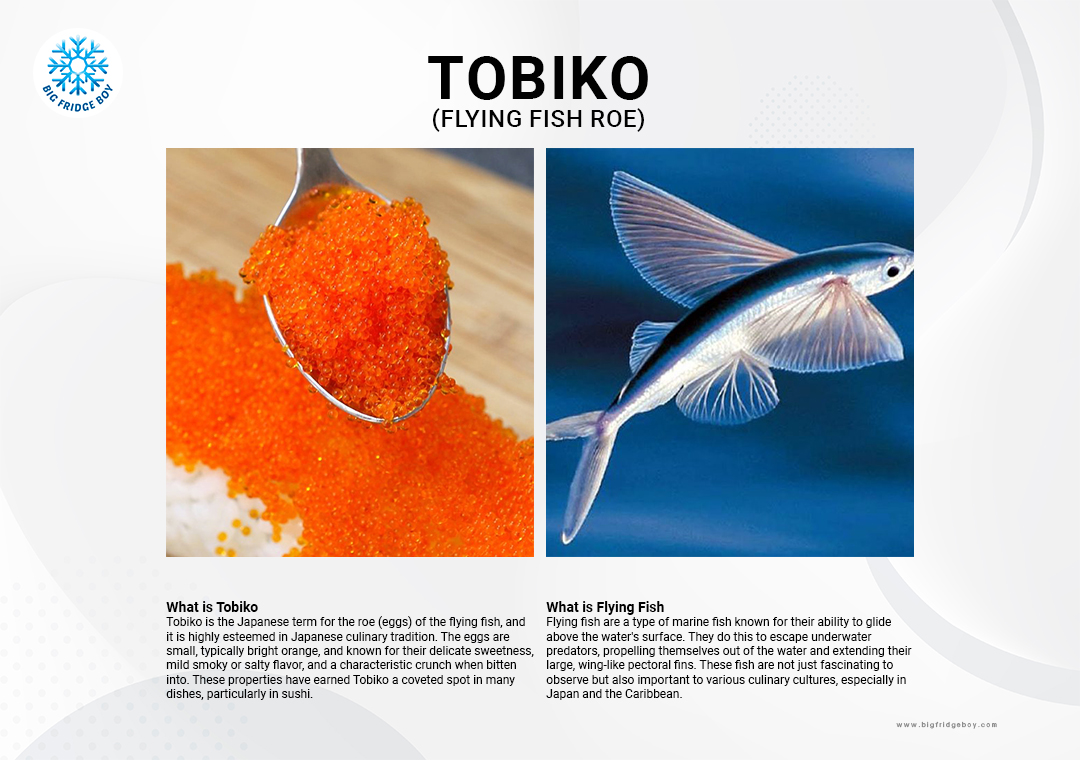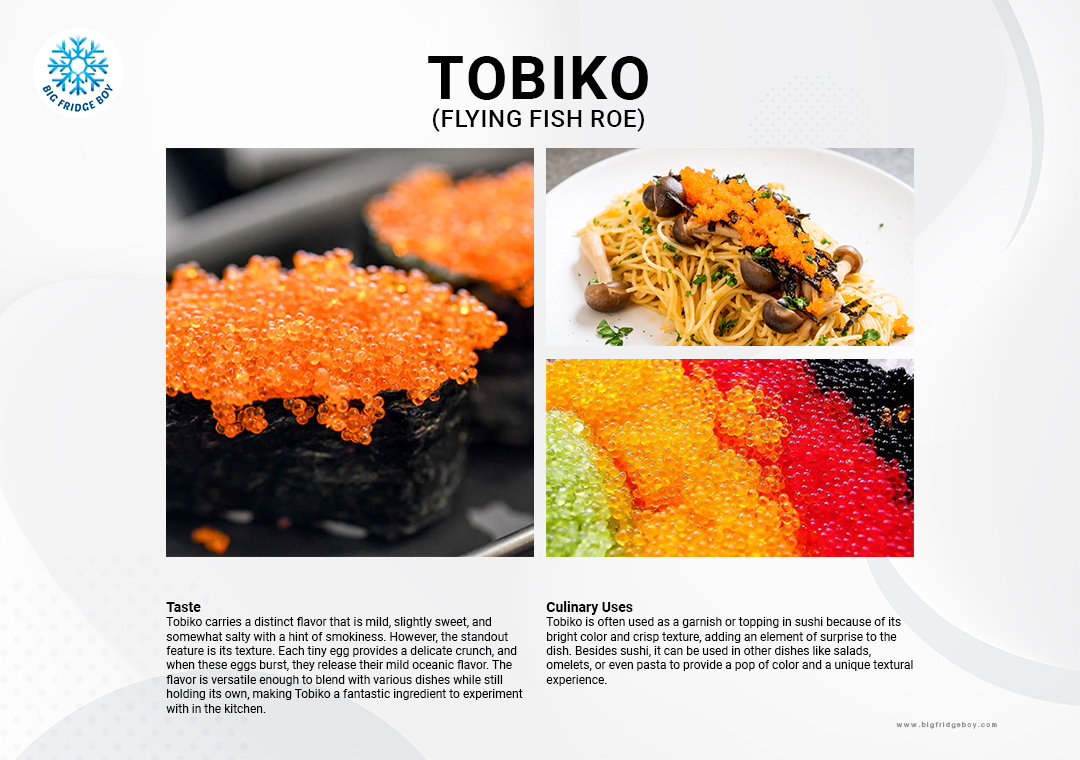"Tobiko: The Colorful, Crunchy Delight of Flying Fish Roe"

Tobiko, a cornerstone ingredient of Japanese cuisine, is celebrated globally for its unique flavor profile, vibrant appearance, and the remarkable texture it brings to a variety of dishes. Known to many as the crunchy, colorful topping on sushi rolls, there's a lot more to this specialty ingredient. Let's delve deeper into the world of tobiko.

What is Tobiko
Tobiko is the Japanese term for the roe (eggs) of the flying fish, and it is highly esteemed in Japanese culinary tradition. The eggs are small, typically bright orange, and known for their delicate sweetness, mild smoky or salty flavor, and a characteristic crunch when bitten into. These properties have earned Tobiko a coveted spot in many dishes, particularly in sushi.
What is Flying Fish
Flying fish are a type of marine fish known for their ability to glide above the water's surface. They do this to escape underwater predators, propelling themselves out of the water and extending their large, wing-like pectoral fins. These fish are not just fascinating to observe but also important to various culinary cultures, especially in Japan and the Caribbean.

Taste
Tobiko carries a distinct flavor that is mild, slightly sweet, and somewhat salty with a hint of smokiness. However, the standout feature is its texture. Each tiny egg provides a delicate crunch, and when these eggs burst, they release their mild oceanic flavor. The flavor is versatile enough to blend with various dishes while still holding its own, making Tobiko a fantastic ingredient to experiment with in the kitchen.
Culinary Uses
Tobiko is often used as a garnish or topping in sushi because of its bright color and crisp texture, adding an element of surprise to the dish. Besides sushi, it can be used in other dishes like salads, omelets, or even pasta to provide a pop of color and a unique textural experience.
Health Benefits
Tobiko is a powerhouse of nutrition. It's rich in proteins, omega-3 fatty acids, vitamins, and minerals, all of which are essential for our overall health. The omega-3 fatty acids, in particular, have numerous health benefits like reducing inflammation, lowering blood pressure, reducing the risk of heart disease, and promoting brain health. However, being high in cholesterol and sodium, it's advised to consume Tobiko in moderation.
Storing Tobiko
When it comes to storing Tobiko, freezing is the way to go. Tobiko is typically sold frozen and can be kept in the freezer for up to six months. After defrosting, it should be consumed within a few days and kept refrigerated in the meantime to preserve freshness.
To sum up, Tobiko, with its vibrant hue, unique texture, and delicate flavor, is an exquisite ingredient that can elevate the culinary experience of various dishes, especially sushi. Its rich nutritional profile further adds to its appeal. Whether you're a seasoned sushi lover or a culinary explorer, Tobiko is indeed a fascinating ingredient to know and enjoy.





